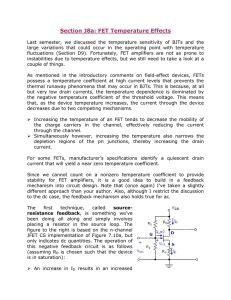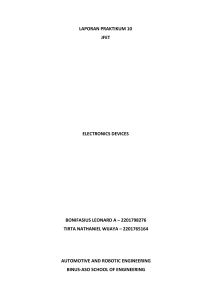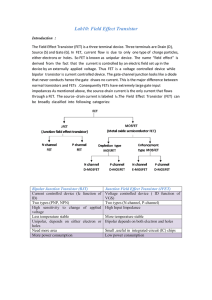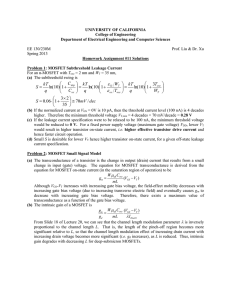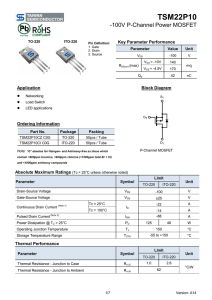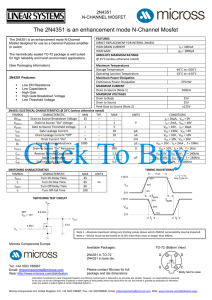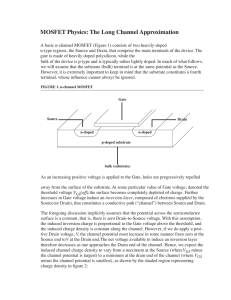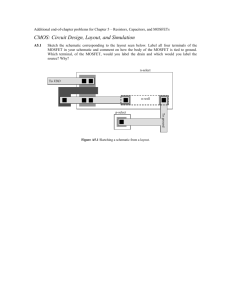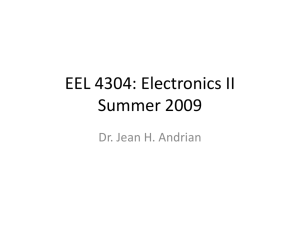schematic n
advertisement
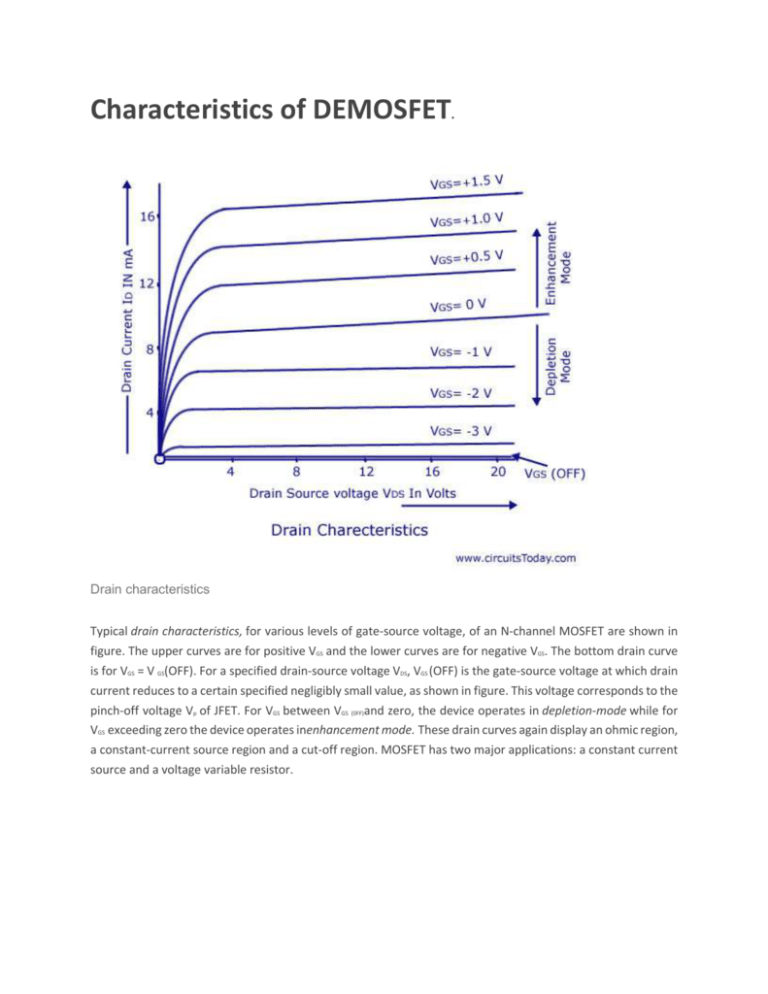
Characteristics of DEMOSFET. Drain characteristics Typical drain characteristics, for various levels of gate-source voltage, of an N-channel MOSFET are shown in figure. The upper curves are for positive VGS and the lower curves are for negative VGS. The bottom drain curve is for VGS = V GS(OFF). For a specified drain-source voltage VDS, VGS (OFF) is the gate-source voltage at which drain current reduces to a certain specified negligibly small value, as shown in figure. This voltage corresponds to the pinch-off voltage Vp of JFET. For VGS between VGS (0FF)and zero, the device operates in depletion-mode while for VGS exceeding zero the device operates inenhancement mode. These drain curves again display an ohmic region, a constant-current source region and a cut-off region. MOSFET has two major applications: a constant current source and a voltage variable resistor. DEMOSFET-transfer characteristics The transfer (or transconductance) characteristic for an N-channel DE-MOSFET is shown in figure. IDSSis the drain current with a shorted gate. Since the curve extends to the right of the origin, IDSS is no longer the maximum possibledrain current. Mathematically, the curve is still part of a parabola and the same square-law relation exists as with a JFET. In fact, the depletion-mode MOSFET has a drain current given by the same transconductance equation as before, equation . Furthermore, it has the same equivalent circuits as a JFET. Because of this, the analysis of a depletion-mode MOSFET circuit is almost identical to that of a JFET circuit. The only difference is the analysis for a positive gate, but even here the same basic formulas are used to determine the drain current ID, gatesource voltage VGS etc. The foregoing discussion is applicable in principle also to the P-channel DE-MOSFET. For such a device the sign of all currents and voltages in the characteristics must be reversed. Schematic Symbols of DEMOSFET. DEMOSFET-Schematic symbols Figure shows the schematic symbol for a DE-MOSFET. Just to the right of the gate is the thin vertical line representing the channel. The drain lead comes out from the top of the channel and the source lead connects to the bottom. The arrow is on the P-substrate and points to the N-material. In some applications, a voltage can be applied to the substrate for added control of drain current. For this reason, some DE-MOSFETs have four terminal leads. But in most applications, the substrate is connected to the source. Usually the substrate is connected to the source internally by the manufacturer. This results in a three terminal device whose schematic symbol is shown in figure. Schematic symbol for a three terminal P-channel DE-MOSFET device is shown in figure. The schematic symbol of a P-channel DE-MOSFET is similar to that of an N-channel DE-MOSFET, except that the arrow points outward.
